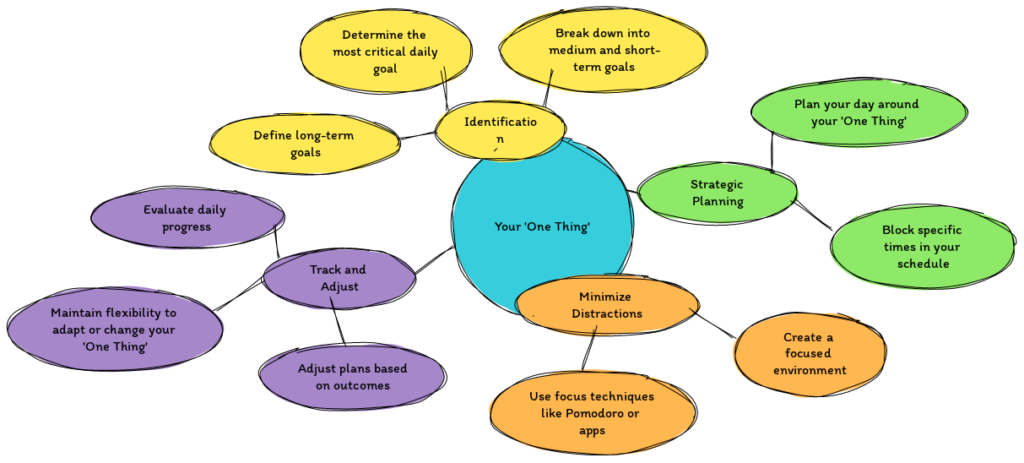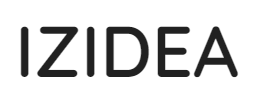First published in 2013, “The One Thing” by Gary Keller and Jay Papasan is an essential read for anyone looking to optimize their productivity and personal success. This book explores how focusing on just one important task at a time can transform your professional and personal outcomes. Through a series of clear concepts and relevant examples, the authors demonstrate how to identify what truly matters in various aspects of life. If you find yourself constantly overwhelmed or struggling to achieve your goals, this summary will provide you with practical tools to simplify your approach and maximize your efficiency. Read on to discover how focusing your efforts can lead to extraordinary results.
“The One Thing” offers a simple yet powerful approach to increasing productivity and achieving your goals. The central principle is to focus on the most important task that will make all other tasks easier or unnecessary. The authors debunk the myth of multitasking and argue for an intense focus on one thing at a time.
The book begins by explaining how our culture values work overload and multitasking, which often leads to frustration and a lack of significant achievement. Through studies and anecdotes, it is demonstrated that the “The One Thing” approach helps overcome these challenges by clarifying your goals and identifying your absolute priority.
The authors then introduce strategies for applying this concept daily, including the focusing question, which helps you determine the most impactful task to accomplish to move towards your ultimate goal. They also offer advice on managing your time effectively, pushing back against distractions, and regularly assessing your progress.
Ultimately, “The One Thing” encourages you to rethink your approach to work and life. By focusing on what is essential, you can simplify your path to success, reduce your stress, and enhance your overall satisfaction.
Key Points
Introduction to “The One Thing”
- Book Context: In a fast-paced and complex world, the ability to focus on the essentials is more valuable than ever. “The One Thing” advocates that the key to success is not in the quantity of effort expended, but in focusing on one crucial thing at a time.
- Main Thesis: The book argues that focusing your energy on your most important task will help you succeed better and faster than spreading this energy across multiple fronts.
Foundations of the Concept
- The multitasking myth:
- Research and implications: Multitasking is an illusion; studies show that it reduces effectiveness and increases errors.
- Impact on personal productivity: Focusing on multiple tasks at once decreases the quality of work and the ability to achieve optimal results.
- Focus and clarity:
- Identifying the essentials: Understanding what is crucial in your projects and why it is vital to focus on the task that will have the most significant impact.
- Simplifying objectives: How reducing goals and tasks to one thing can lead to better outcomes.
The Focusing Question
- The concept of the Focusing Question: “What is the one thing I can do such that by doing it everything else will be easier or unnecessary?”
- Practical daily application: Use this question to guide daily planning and decision-making.
- Importance in setting priorities: How this question helps distinguish the actions that provide the greatest value.
Implementation Strategies
- Planning and prioritization:
- Defining clear priorities: Organize daily activities around the answer to the focusing question.
- Structuring your day: Tips for structuring your day to prioritize your “One Thing”.
- Techniques for managing distractions:
- Work environment: Create an environment that minimizes interruptions and fosters focus.
- Tools and tips: Use techniques such as dedicated time blocks and technology to stay focused.
- Maintaining motivation and commitment:
- Celebrating small victories: Recognize and celebrate progress to maintain motivation.
- Continuous feedback: Engage in a feedback loop to adjust and refine efforts based on the outcomes achieved.
Application to Various Areas of Life
- Professional:
- In the workplace: Examples of how focusing on a single task can transform professional performance.
- Leadership and management: Applying “The One Thing” in team management and project leadership.
- Personal:
- Relationships and well-being: Applying the principle to improve personal relationships and overall well-being.
- Personal development: Using the concept for personal growth and continuous learning.
- Examples from the book:
- Practical cases and case studies: Inspirational anecdotes and stories from the book that illustrate the effectiveness of the “The One Thing” approach.
The Fundamental Principle of ‘The One Thing’ Method
“The One Thing” offers a revolutionary approach to improving productivity and efficiency by focusing only on the task that will have the most significant impact at any given time. This method relies on simplifying objectives and tasks to maximize results by minimizing distractions and multitasking.
The fundamental principle of “The One Thing” is to ask the following question: “What is the one thing I can do such that by doing it everything else will be easier or unnecessary?” This question helps identify the most crucial task that should be the absolute priority, allowing you to focus all efforts on it until completion.
How the Method Works

- Identifying Your ‘One Thing’:
- Clearly define your long-term goals across all areas of your life (career, health, relationships, etc.).
- Break these goals down into medium and short-term objectives.
- Each day, determine which goal or task is the most critical that moves you closer to your long-term objective.
- Strategic Planning:
- Plan your day around your “One Thing”. This should be the first task you accomplish each day, ensuring that less important distractions and emergencies do not compromise your main objective.
- Block specific times in your schedule dedicated exclusively to this task, without interruptions.
- Minimizing Distractions:
- Create an environment conducive to focus. This may include a dedicated workspace, periods of unavailability signaled to your colleagues, and the elimination of technological interruptions.
- Use techniques such as the Pomodoro method or distraction-blocking apps to maintain your focus.
- Tracking and Adapting:
- At the end of each day, assess the progress made towards your “One Thing”.
- Adjust your plans based on the results and challenges encountered.
- Maintain flexibility to adapt or change your “One Thing” as your priorities evolve or as new opportunities arise.
Why the Method Is Effective
- Focus on impact: By focusing only on the task that has the most significant impact, you maximize your effectiveness and results.
- Reduction of stress and overload: By eliminating the need to juggle multiple tasks, you reduce stress and increase your personal satisfaction.
- Increase in clarity and motivation: The clarity of having one goal at a time can enhance motivation and satisfaction from the work accomplished.
Conclusion
The method of “The One Thing” is designed to help individuals achieve their goals in a more strategic and less chaotic manner. By identifying and focusing on the task that will make the most significant difference, you can not only improve your performance but also achieve better harmony in your daily life. This approach is particularly beneficial in a world where distractions are omnipresent and time always seems insufficient to accomplish everything we desire.
What could be your “One Thing” that you could start doing today to positively impact all other aspects of your life?





